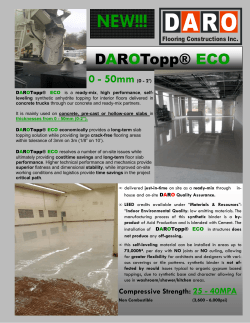
Eco Schoolhouse Brochure.
Design Team: Peckham & Wright Architects, Inc. - Project Administrator/ Architect: Nick Peckham; Architecture: Brad Wright, Mark Andre, Adrienne Stolwyk Trabue, Hansen & Hinshaw, Inc. - Structural Engineering: Tom Trabue; Civil Engineering: Tom Wooten Timberlake Engineering, P.C. - Mechanical & Electrical Engineering: Mark Timberlake, Rory Stegeman Acoustical Design Group - Acoustical Design: Russ Olsen S & V Consultants - Truss Design: Roger Verslues Project Solutions Companies - Advanced Commissioning: Lawrence Lile Columbia Public Schools Team: Superintendent - Dr. Phylis Chase, Dr. Jim Ritter Elementary Superintendent - Dr. Jack Jensen Grant Elementary Principal - Dr. Beverly Borduin Finance - Linda Quinley Teacher - Jennifer Hartz Facilities - Chester Edwards, Charles Oestreich, Don Kardell IT Director - Dave Kessler Public Relations - School Board Construction Team: A 1 Rental - Concrete mixer Ahrens Steel & Welding Supplies - Steel Truss Plates: Mike Becker Alpine Builders - General Contracting, concrete labor, SIPS labor, windows and door labor, siding and soffit labor, concrete countertops, painting labor and skylight installation: Scott Powell, Matt Pigg, Robert Conner ALPRO Acoustical Systems - Acoustical Systems Manufacturer: Albert Pitts Barry Cameron Design & Build - Siding Labor, rain barrel installation: Barry Cameron, Joey Cameron, Trevor Reeves Ben Vineyard Construction - SIPS labor, windows and door installation, skylight installation: Ben Vineyard, Rob Irvin, Robert Jamison Bobcat of St. Louis/Columbia - Bobcat Boone County Lumber - Hardiplank & Trim, soffits: Brad Eiffert Boone County Millworks - Doors: Greg Eiffert Carol Brown Custom Sewing - Drapery: Carol Brown Christensen Construction - Recycled asphalt walks, siding labor: Rob Christensen Cloutman and Stingley - Walkoff Mat: Rick Stingley, Tina Fisher Coastal Electric - Electrical Conduit: Dennis Palmer Columbia Ready Mix - Flyash Concrete: Earl Ginter Columbia Sign Service - Crane Columbia Welding & Machine - Truss Plates Crescent Parts & Equipment Company - Electrical Equipment: Alan Eddie Dave Griggs Flooring America - Bio-based tile floor: Sunday Nickerson, Dave Griggs D & L Construction - Flatwork: Mark Donoho, Mike Lent Designer Landscape - Landscape: Gene Hrdina, Jason Dubbert, Thelma Conner Dubinski Drywall - Drywall Labor: John Dubinski Energy Savings Store - Photovoltaic System: Bob Solger Gary Pauley Construction - Soffit labor: Matt Kollmeyer GetAboutColumbia - Bike Racks: Corry Flaker Golterman & Sabo - Tackboards: Cyndi Walker Greenheck - Heat Recovery Unit: Jon Wells Hardware Resources - Cabinet hardware Home Depot - Rock Fill Slab Insulation, Skylights, Base & Trim: Jim Panacek, Sean Johnson Independent Stave Company - Rain Barrels: The Boswell Family James Hardie Company - Siding Manufacturer Jim Peckham - Labor Johnston Paint and Decorating - Paint (Benjamin Moore Paints) : Melissa Murphy Liberty Hardwoods - Cabinets Lindsey Rental Trailer - Sherman Brown, Billy Spry Marathon Office Interiors - File Cabinets: Greg Wolff Mark Hall Cabinets - Cabinets: Stephanie Hall Mick Wurzer - Project Sign installation, contracting Mid-City Lumber Co., Ltd. - Timber Trusses: Kevin Pickett Midwest Electronics - Fire Alarm Connection: Ralf Nosic Miratec Composite Trim - Trim Mitsubishi - HVAC System Palmer Painting - Painting: Jeanne Crowley Paric Construction - Trim Labor: Joe Cook Precision Electric - Electrical labor: Todd Noordsay Professional Contractors & Engineers, Inc. - Earthwork, Foundation & Slab, Concrete labor: Andy Bonderer, Gary Brown, Randall Dennison, Mike McMahan, Brian Small, David Sparks, Jason Schoeneberg, Shawn Tiffany, and John Ewens Quaker Windows - Windows: Mike Knoll Rafferty Lighting - T-8 Lights: Mike Rafferty Randy Ott Trucking - Trucking: Wanda Ott Rapp Electric - Electrical Service: Billy Rapp; Electric Excavation: Travis Greenup REW Materials - Drywall: Clint Wright Robert Meunier - Trim labor Sebco Companies, Inc. - Acoustical Ceiling Distributor Tectum: Scott Brumbach, Josh Mundwiller, Mark Mundwiller Star Heating and Cooling - HRU Labor & Heat Pump Labor: David Thompson, Neil Ishmael, David Cook, Nathan Wood, Ryan Jones, and Mark Schutte Steve Schaefer Flooring - Floor Installation: Steve Schaefer Stickman Productions - Cabinets, concrete countertops: Andy Werth Thermocore of Missouri, LLC - SIPS Manufacturer: Stephan Johansmeyer, Mikey Mantle, Pat Hood, Jeremy Patrick Triple B Doors - Door closers & floor stops: Bob Drainer Watkins Roofing - Roof, flashing, gutters and downspouts: Dan Coleman Grants: Boone Community Trust - Photovoltaic Panels: Robbie Price Boone Electric Trust - Photovoltaic Panels William T. Kemper Foundation, Commerce Bank Photovoltaic Panels Hinkle Trust - Photovoltaic Panels Other Services: Bee Seen Signs - Project Sign: Tom Hourigan Columbia Public Works - Zoning: John Glascock Columbia Protective Inspection - Permit: Steve Buckles Docucopy, LLC - Documents Printing: Ron Edwards Peckham & Wright Architects - Graphic Design: Dawn L. Andres; Permit fee: Nicholas Peckham US Green Building Council - LEED® for Schools: www.USGBC.org “Everything we do for children counts double.” - Nick Peckham, AIA Grant Elementary School, Columbia, Missouri LEED®ing the Way When the Columbia Public School District lost an overflow classroom trailer to arson fire in 2007, Peckham & Wright Architects, Inc. (PWA) proposed replacing it in a way that would best serve the School District, teachers and children. The Eco School House, an energy-efficient building designed as an Reminiscent of the one room schoolhouses in which many alternative to trailer of our grandparents were educated, the Eco School House classrooms, is a cooperative is an state-of-the-art example of sustainable design – an ideal learning environment for generations to come. collaboration with the School District and leaders in the design and construction community. The building, prominently located on a major street adjacent to the 100-year-old Grant Elementary School, offers the public a tangible example of the school's sustainability focus. With a design that meets the U.S. Green Building Council’s LEED® (Leadership in Energy and Environmental Design) criteria, the school has become a teaching tool, allowing students to see, touch, and learn about the building's environmental and socially sustainable components. The project created a "snowball effect" prompting the principal and teachers to integrate sustainability into the school curriculum and parents to donate time and materials to expand the garden. The School District, which embraced the unique project, will continue to seek ways to enhance the welfare and success of its students through the design of its school facilities. Most remarkable was the outpouring of community support for the project. 100% of the labor and services were completed on a pro bono basis with donations of design, materials and construction from over 150 people in 40 organizations – an act of sustainable kindness that will have a profound effect on the lives of children for many years to come. “Our children will benefit from this building now, but also learn how to use our earth’s resources wisely. Eventually these children will be the leaders of our community and will continue this effort as adults.” - Dr. Beverly Borduin, Principal Grant Elementary School, Columbia, Missouri The Snowball Effect The primary goals for the Eco School House were 1) to design a new classroom that would have a reduced environmental impact; 2) to increase student and staff health; 3) to increase student performance; and 4) to have the building be a teaching tool on the merits of sustainable design. The result of this design focus prompted the school's principal and teachers to integrate sustainability into the school curriculum. The following activities have been instituted: • Local utility representatives spoke to students about energy efficiency and sustainability issues; • Parents, children and businesses donated time and materials for the garden which has become a National Wildlife Society Certified Wildlife Habitat; • All Grant School students participated in creating the “windows” sculpture installed on the south wall above the garden and fourth graders collaborated on a poem based on their experiences in the garden; • Styrofoam lunch trays have been replaced with a biodegradable product; • The school’s recycling program has expanded; • An Eco Club and a Stream Team now focus on environmental issues; • Paper consumption at Grant School has reduced; • An Eco School House song was written and performed by kids at various community events; • A School House Rock event was held to demonstrate "green" school activities; • The Eco School House has been on the Missouri Solar Homes Tour for the past 2 years; • Partnerships with community groups and business neighbors has reduced the need for parking and increased walking to school; • and bike racks were installed to promote alternative transportation. Building Performance Of the five adjunct classrooms, the Eco School House had the lowest rate of absenteeism and visits to the nurse. This suggests that the building’s conditions enable better attendance and health, which generally lead to better learning. Additionally, the School District has compared the Eco School House's energy use (at $.67/square foot/year) to 35 of the District's buildings with energy use ranging from $1.20/s.f./year to $4/ s.f./year. They also compared the energy use of this classroom with the use of the standard mobile classroom that it replaced. The Eco School House used only 8,171 kwh in its first year of operation, which is 46% of the energy used by a standard mobile classroom. Sustainable Design Benefits 1. Skylights and indirect, energy-efficient lighting fixtures provide a well-lit and calming classroom atmosphere. 2. Built-in recycling station encourages sustainable practices. 3. Floor tile, a low-emitting, durable and rapidly renewable, domestically grown corn product, lowers maintenance costs and improves indoor air quality. 4. Energy Recovery Unit captures energy from exhaust air to pretreat incoming air, while the CO2 Sensor monitors air quality and controls fresh air supply on demand. 5. Airlock Entry reduces air infiltration. 6. Native plantings require less water and maintenance. 7. Photovoltaic panels supply roughly 36% of the building’s power needs. 8. Roof reflects heat and lowers the building’s cooling load. 9. Recycled aluminum acoustical panels improve the building’s sound quality. 10. Durable, waste reducing, prefabricated SIP construction with a vapor barrier minimizes air/water infiltration and maximizes thermal efficiency. 11. Energy-efficient heat pump enhances low temperature heating capability. 12. Windows provide natural daylighting and cross-ventilation while roof overhangs reduce harsh light and heat. 13. Low VOC paints and coatings improve indoor air quality. 14. Rain barrels capture water and a drip irrigation efficiently funnels water to the landscape. 15. Light-colored concrete paving helps moderate exterior air temperature. 16. Fly-ash, a post-industrial recycled product, improves concrete performance. 17. Durable fiber cement siding lasts longer and requires less maintenance than traditional vinyl siding. For more information about this project and sustainable design go to the Peckham & Wright Architects website: www.PWArchitects.com 573.449.2683
© Copyright 2025









